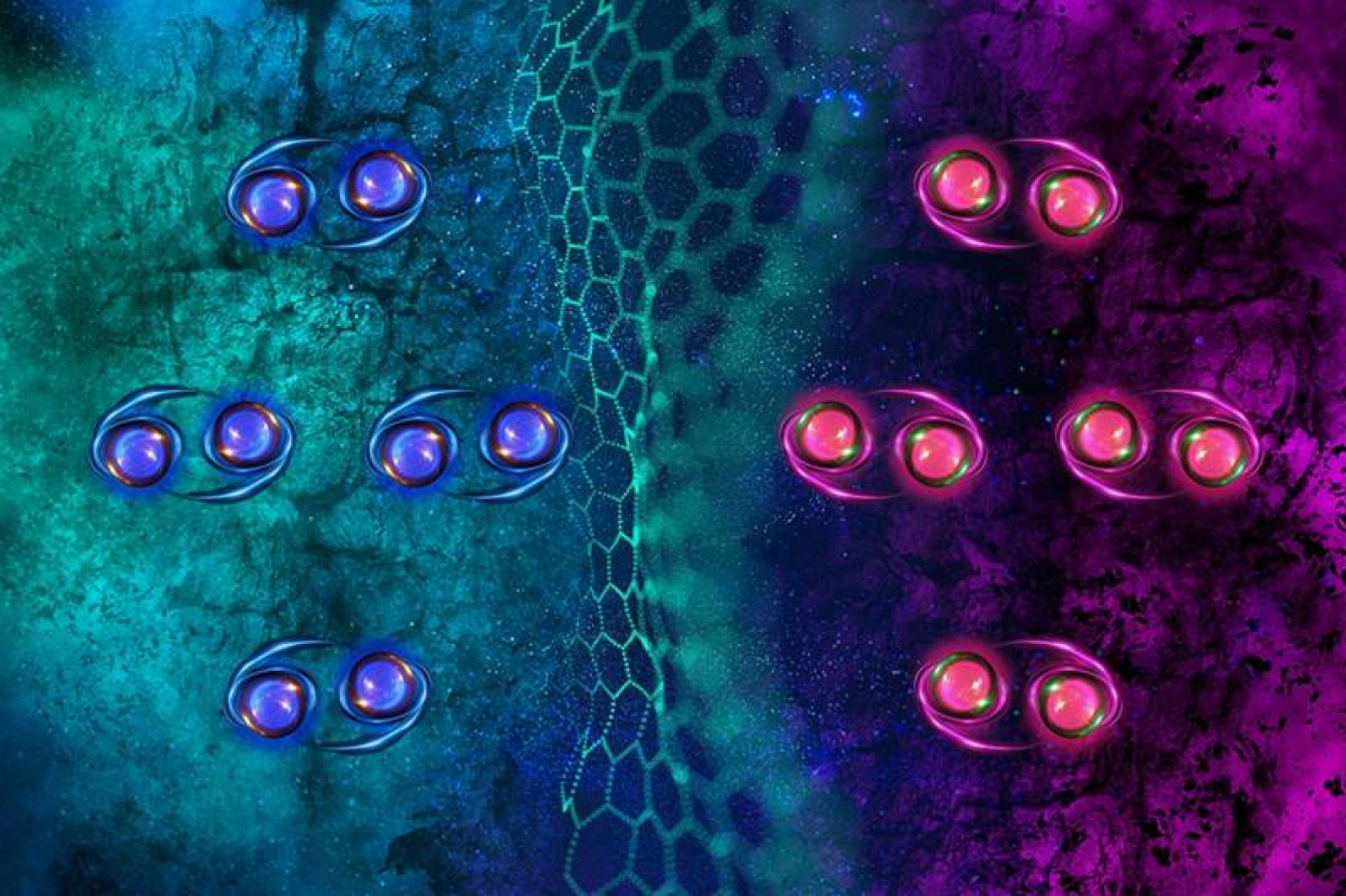Special graphite flakes are defying conventional thought in physics by showing that a material can be a superconductor and a magnet at the same time.
August 6, 2025The Science
Researchers discovered a new state of matter in rhombohedral graphene. This is a form of graphite composed of a few layers of closely packed graphene stacked in an offset way. When it is cooled down to a very low temperature, this simple material behaves like a superconductor and a magnet at the same time! Scientists discovered this characteristic when they observed that this material hosts two different superconducting states. They found that when they applied a magnetic field, it switched from one superconducting state to another. This switch manifests as a sudden spike in the resistance or how difficult it is for electricity to flow through a material. In a superconductor, the resistance would normally be zero. This spike is only possible if the superconductor has an internal, intrinsic magnetism.
The Impact
Superconductivity happens when electrons form pairs and behave like a single quantum entity. As a result, these electrons can move through a material in a frictionless flow without colliding and dissipating energy. Normally, electron pairs have opposite spin. This characteristic renders superconductivity incompatible with magnetism. However, in rhombohedral graphene, the electron pairs’ orbital motion leads to magnetism. The intrinsic magnetism points to new physics. Scientists may be able to use it like a tuning knob for controlling the superconducting state in new electronic devices. This type of superconductor may also be extremely useful for quantum computing. It could host special particles that can store quantum information in a way that resists errors.
Summary
Researchers discovered unusual superconductivity in simple rhombohedral graphene. They observed spikes in the resistance and magnetic hysteresis that scientists had never measured in a superconductor before. Their measurements imply that the superconductor is also a magnet. Scientists explain intrinsic magnetism as originating from a wavefunction with a spin triplet state and a non-zero orbital angular momentum. The measurements also imply that there are two types of superconducting states in the same material with opposite intrinsic magnetism. These states form different domains in which the intrinsic magnetic moments point in opposite directions. When scientists apply an external magnetic field to the material, the magnetic moments are forced to align in the direction of the field. However, they resist this change until the field is strong enough to overcome the internal opposing forces. This opposition causes the misaligned domains to flip suddenly at a certain value of the magnetic field. This rearrangement dissipates energy and causes the resistance to go from zero to a finite value. However, once the system settles in the new configuration, the resistance goes back to zero. The same thing happens if the field is applied in the opposite direction. Researchers think that this unconventional superconductivity is possible because the electrons in rhombohedral graphene are spin- and valley-polarized. This arrangement favors superconducting pairs with aligned spins and non-zero angular momentum, making the superconductor chiral. Theory suggests that this type of superconductivity is also topological.
Contact
Long Ju
MIT
longju@mit.edu
Funding
US Department of Energy, Office of Science, Basic Energy Sciences, Materials Sciences and Engineering Division.
Publications
Han T., et al., Signatures of chiral superconductivity in rhombohedral graphene. Nature (2025). [DOI: 10.1038/s41586-025-09169-7]
Related Links
MIT physicists discover a new type of superconductor that’s also a magnet, MIT News


